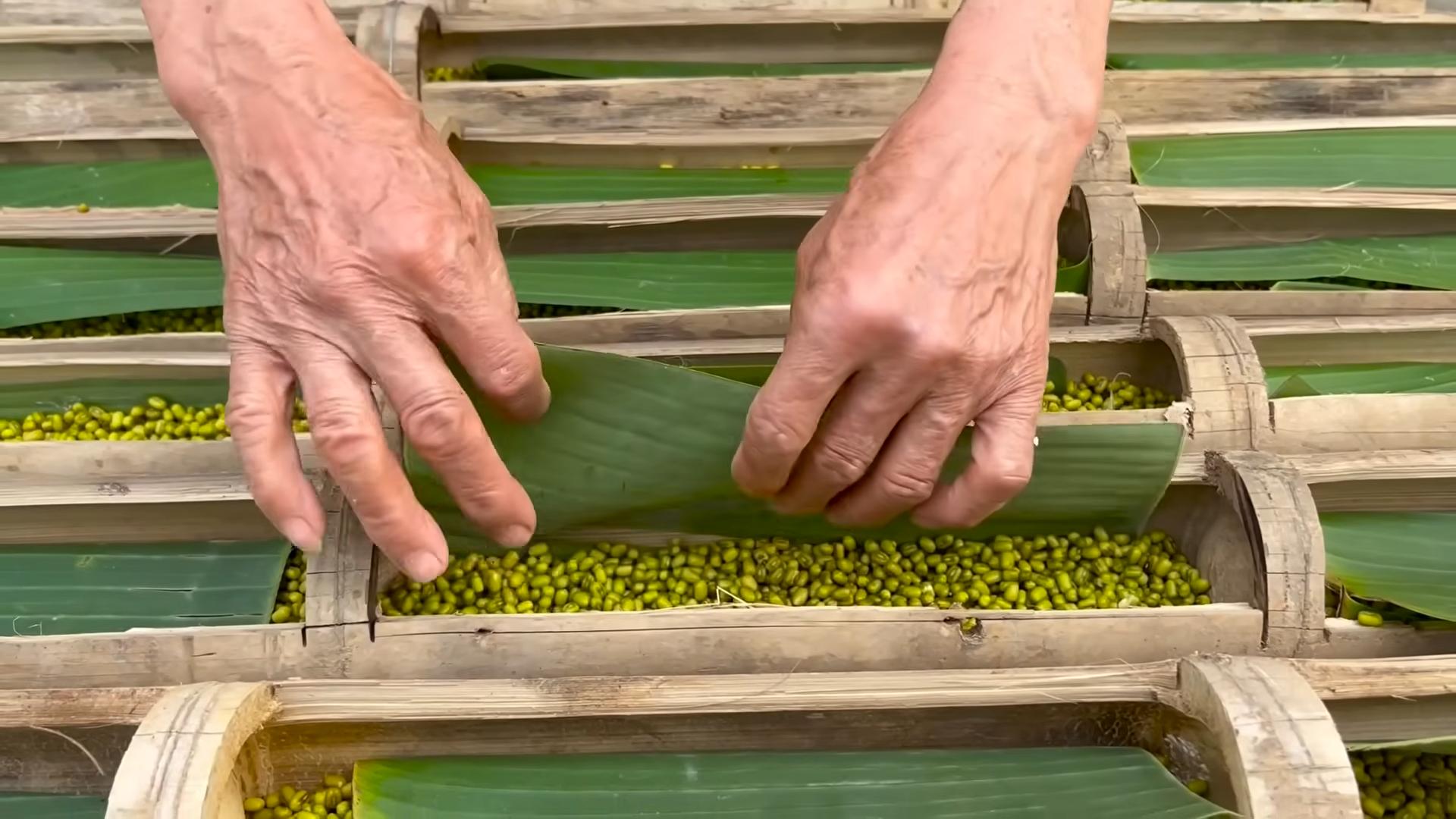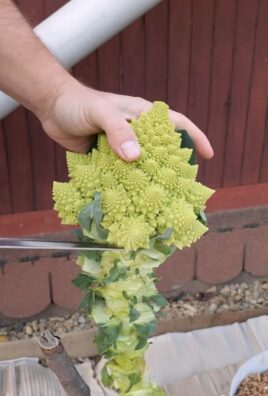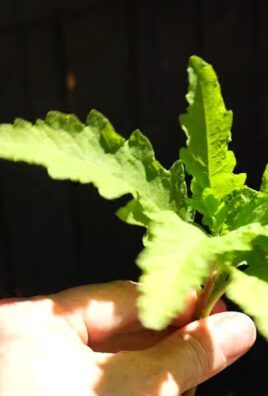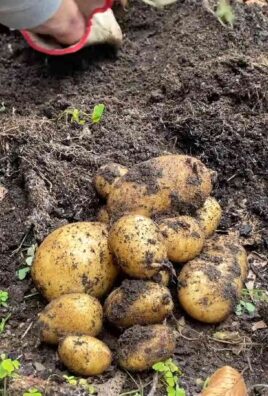Sprouting beans easily at home is a game-changer for anyone looking to add fresh, nutritious greens to their diet without breaking the bank. Forget those expensive trips to the organic grocery store! I’m going to show you how to cultivate your own little bean sprout farm right on your kitchen counter.
The practice of sprouting beans isn’t new; it stretches back centuries! In many Asian cultures, sprouted beans have long been a staple, valued for their enhanced digestibility and concentrated nutrients. Think about it – you’re essentially unlocking the full potential of that tiny bean, transforming it into a powerhouse of vitamins and enzymes.
Why should you bother with this DIY trick? Well, for starters, it’s incredibly cost-effective. A handful of dried beans can yield a surprisingly large amount of sprouts. Plus, it’s a fantastic way to ensure you’re getting fresh, pesticide-free produce. But more than that, sprouting beans easily at home is incredibly rewarding. There’s something truly satisfying about watching those little sprouts emerge and knowing you nurtured them from seed (or, in this case, bean!) to deliciousness. So, let’s dive in and discover the simple steps to successful bean sprouting!

Sprout Your Own Beans: A Simple Guide to Delicious, Nutritious Sprouts!
Hey there, fellow food enthusiasts! Ever wanted to grow your own food but thought you didn’t have the space or time? Well, I’ve got a super easy project for you: sprouting beans! It’s incredibly simple, requires minimal equipment, and the result is a powerhouse of nutrients you can add to salads, sandwiches, stir-fries, and more. Plus, it’s just plain fun to watch those little sprouts come to life. Let’s get started!
What You’ll Need
Before we dive in, let’s gather our supplies. The beauty of this project is that you probably already have most of these things lying around:
* Beans: This is the most important ingredient, of course! I recommend starting with mung beans, lentils, adzuki beans, or chickpeas. These are known to sprout easily and have a mild flavor. Make sure you’re using dried beans specifically intended for sprouting or cooking, not treated seeds meant for planting.
* A Wide-Mouth Jar: A mason jar works perfectly, but any glass jar with a wide mouth will do. The size will depend on how many beans you want to sprout. A quart-sized jar is a good starting point.
* Sprouting Lid or Cheesecloth: You need something to cover the jar that will allow water to drain but keep the beans inside. A sprouting lid is ideal (you can find these online or at some health food stores), but a piece of cheesecloth secured with a rubber band works just as well.
* Water: Clean, filtered water is best.
* A Bowl or Dish: To prop the jar at an angle for drainage.
* A Cool, Dark Place: A cupboard or pantry works great.
Getting Started: Soaking Your Beans
The first step is to wake up those dormant beans! Soaking them in water rehydrates them and kicks off the sprouting process.
1. Rinse the Beans: Place your chosen beans in a colander and rinse them thoroughly under cool running water. This removes any dust or debris.
2. Transfer to the Jar: Put the rinsed beans into your clean jar. Don’t overfill the jar! Beans will expand significantly as they soak and sprout. I usually fill the jar no more than 1/4 full with dry beans.
3. Add Water: Pour cool, filtered water into the jar, covering the beans completely. Add enough water so that it’s about 2-3 times the volume of the beans.
4. Cover and Soak: Cover the jar with your sprouting lid or cheesecloth and secure it with a rubber band. Let the beans soak in a cool, dark place for 8-12 hours, or even overnight. I usually soak mine before I go to bed and they’re ready to go in the morning.
The Main Event: Sprouting Your Beans
Now for the fun part! This is where you’ll see those little sprouts emerge.
1. Drain and Rinse: After the soaking period, drain the water from the jar through the sprouting lid or cheesecloth. Rinse the beans thoroughly with cool water. This is important to remove any built-up starches and prevent mold growth.
2. Invert and Drain: After rinsing, invert the jar and prop it at an angle in a bowl or dish. This allows any excess water to drain out and provides good air circulation. The angle is key – you don’t want the beans sitting in a pool of water.
3. Rinse and Drain Regularly: This is the most crucial part of the sprouting process. You need to rinse and drain the beans 2-3 times a day. I usually do it in the morning, afternoon, and before bed. This keeps them moist and prevents them from drying out or getting moldy. To rinse, simply run cool water through the sprouting lid or cheesecloth, swishing the beans around gently. Then, drain thoroughly and return the jar to its angled position.
4. Maintain Darkness: Keep the jar in a cool, dark place between rinsings. This mimics the natural environment where seeds germinate.
5. Observe and Enjoy: Within a day or two, you should start to see tiny sprouts emerging from the beans. Continue rinsing and draining them regularly. The sprouting time will vary depending on the type of bean and the temperature, but most beans will be ready to eat in 3-5 days. I like to taste them each day to see how they’re developing.
Harvesting and Storing Your Sprouts
Once your sprouts have reached your desired length (usually about 1/2 to 1 inch), it’s time to harvest them!
1. Final Rinse: Give your sprouts one last thorough rinse. This will help remove any remaining hulls or loose skins.
2. Remove Hulls (Optional): Some people prefer to remove the hulls (the outer skins) from the sprouts. This is mostly for aesthetic reasons, as the hulls are perfectly edible. To remove them, gently rub the sprouts between your hands under running water. The hulls should float away. This step can be a bit time-consuming, so don’t feel obligated to do it.
3. Dry Thoroughly: This is crucial for preventing spoilage. Spread the sprouts out on a clean kitchen towel or salad spinner and let them air dry for a few hours. You can also use a salad spinner to remove excess water.
4. Store in the Refrigerator: Transfer the dried sprouts to a clean, airtight container and store them in the refrigerator. They should last for up to a week, but they’re best consumed within a few days.
Troubleshooting: Common Sprouting Problems
Sometimes, things don’t go exactly as planned. Here are a few common issues you might encounter and how to fix them:
* Mold: Mold is the biggest enemy of sprouting. It usually appears as fuzzy white or gray patches. If you see mold, discard the entire batch of sprouts immediately. To prevent mold, make sure you’re rinsing and draining the sprouts thoroughly 2-3 times a day. Good air circulation is also important.
* Unpleasant Smell: A sour or musty smell is another sign of spoilage. This usually indicates that the sprouts are not being rinsed and drained properly. Discard the batch and start over, paying closer attention to the rinsing process.
* Slow Sprouting: If your sprouts are taking longer than expected to sprout, it could be due to a few factors. The temperature might be too cold, or the beans might be old. Try moving the jar to a slightly warmer location (but not too warm!) and make sure you’re using fresh beans.
* Uneven Sprouting: It’s normal for some beans to sprout faster than others. Don’t worry if you see some sprouts that are longer than others. Just harvest the batch when most of the sprouts have reached your desired length.
Tips and Tricks for Sprouting Success
Here are a few extra tips to help you become a sprouting pro:
* Start Small: When you’re first starting out, it’s best to sprout small batches of beans. This will give you a chance to get the hang of the process without wasting a lot of beans if something goes wrong.
* Experiment with Different Beans: Once you’ve mastered the basics, try sprouting different types of beans and seeds. Each one has a unique flavor and texture.
* Use Filtered Water: Tap water can sometimes contain chlorine or other chemicals that can inhibit sprouting. Filtered water is always a better choice.
* Keep it Clean: Make sure your jar, sprouting lid, and other equipment are thoroughly clean before you start. This will help prevent the growth of mold and bacteria.
* Don’t Overcrowd: Avoid overcrowding the jar with too many beans. They need room to expand and breathe.
* Taste Test: Taste your sprouts regularly to monitor their flavor and texture. They should taste fresh and slightly sweet. If they taste bitter or off, discard them.
* Enjoy Your Sprouts! The best part of sprouting is eating your delicious, nutritious sprouts. Add them to salads, sandwiches, stir-fries, soups, or enjoy them as a snack.
Beyond the Basics: Sprouting Other Seeds and Grains
Once you’re comfortable sprouting beans, you can expand your horizons and try sprouting other seeds and grains. Here are a few ideas:
* Alfalfa Seeds: These produce delicate, slightly sweet sprouts that are great in salads and sandwiches.
* Broccoli Seeds: Broccoli sprouts are packed with nutrients and have a slightly spicy flavor.
* Radish Seeds: Radish sprouts have a peppery kick that adds a nice zing to salads and sandwiches.
* Quinoa: Quinoa sprouts are a good source of protein and fiber.
* Wheat Berries: Wheat berry sprouts are chewy and slightly sweet.
The sprouting process is generally the same for all seeds and grains, but the soaking and sprouting times may vary. Do some research to find the best

Conclusion
Sprouting beans at home is no longer a daunting task relegated to health food stores or specialized kitchens. This simple, cost-effective, and incredibly rewarding DIY trick unlocks a world of nutritional benefits and culinary possibilities right in your own kitchen. We’ve shown you how easy it is to transform humble dried beans into vibrant, living foods packed with enzymes, vitamins, and minerals. Forget the expensive store-bought sprouts that often lack freshness; with this method, you control the quality and ensure peak nutritional value.
But why is this DIY trick a must-try? Beyond the cost savings and freshness factor, sprouting beans significantly enhances their digestibility. The sprouting process breaks down complex starches, making the nutrients more readily available for your body to absorb. This is particularly beneficial for individuals with sensitive digestive systems who may experience discomfort from consuming unsprouted beans. Furthermore, sprouting reduces phytic acid, an antinutrient that can inhibit the absorption of essential minerals like iron and zinc.
The possibilities for incorporating your homemade sprouts into your diet are endless. Add them to salads for a crunchy texture and a boost of nutrients. Toss them into stir-fries for a healthy and flavorful addition. Blend them into smoothies for a hidden dose of vitamins and enzymes. Use them as a topping for sandwiches or wraps. Experiment with different types of beans to discover your favorite flavor profiles. Mung beans offer a mild, slightly sweet taste, while lentils provide a more earthy and savory flavor. Adzuki beans bring a nutty sweetness, and chickpeas offer a hearty, substantial texture.
Consider these variations to personalize your sprouting experience:
* **Sprouting different beans together:** Combine different types of beans with similar sprouting times for a colorful and flavorful mix.
* **Adding spices to the soaking water:** Infuse your sprouts with subtle flavors by adding spices like turmeric, cumin, or ginger to the soaking water.
* **Sprouting in different containers:** While a mason jar is a classic choice, you can also use a sprouting bag or a multi-tiered sprouting system for larger batches.
* **Varying the sprouting time:** Experiment with different sprouting times to achieve your desired level of sprout development. Some people prefer shorter sprouts with a milder flavor, while others prefer longer sprouts with a more pronounced taste.
We are confident that once you try this simple DIY trick, you’ll be amazed at how easy and rewarding it is to sprout beans at home. Not only will you be enjoying a healthier and more nutritious diet, but you’ll also be reducing food waste and saving money. So, gather your beans, grab a jar, and get sprouting!
We encourage you to try this method and share your experiences with us. Let us know what types of beans you sprouted, what variations you tried, and how you incorporated your sprouts into your meals. Your feedback will help us refine this guide and inspire others to embrace the joy of sprouting. Share your photos and stories on social media using #HomeSproutedBeans and let’s build a community of sprout enthusiasts!
Frequently Asked Questions (FAQ)
What types of beans are best for sprouting?
Almost any type of dried bean can be sprouted, but some are more popular and easier to sprout than others. Mung beans, lentils, adzuki beans, chickpeas, and green peas are excellent choices for beginners. Avoid sprouting kidney beans, navy beans, and other large beans without cooking them after sprouting, as they contain toxins that are neutralized by cooking. Always research the specific bean you intend to sprout to ensure it is safe to consume raw or lightly cooked after sprouting.
How long does it take to sprout beans?
The sprouting time varies depending on the type of bean, the temperature, and the humidity. Generally, most beans will sprout within 2-5 days. Mung beans typically sprout the fastest, often within 2-3 days, while chickpeas may take slightly longer. Keep an eye on your sprouts and rinse them regularly to prevent mold growth.
How do I know when the sprouts are ready to eat?
Sprouts are ready to eat when they have a small tail emerging from the bean. The length of the tail is a matter of personal preference. Some people prefer shorter sprouts, while others prefer longer sprouts. Taste a few sprouts to determine if they have reached your desired level of flavor and texture.
What if my sprouts start to smell bad?
A foul odor is a sign of bacterial growth or mold. If your sprouts smell bad, discard them immediately. To prevent this, ensure you are rinsing the sprouts thoroughly at least twice a day with fresh, clean water. Also, make sure your sprouting container is clean and well-ventilated. Avoid overcrowding the container with too many beans.
How do I store sprouted beans?
Once your sprouts are ready, rinse them thoroughly and drain them well. Store them in an airtight container in the refrigerator for up to a week. To maximize their shelf life, line the container with a paper towel to absorb excess moisture. Rinse the sprouts again before using them.
Can I sprout beans that are past their expiration date?
While it’s generally safe to sprout beans that are slightly past their expiration date, it’s best to use fresh beans for optimal results. Older beans may have a lower germination rate and may be more susceptible to mold growth. If you choose to sprout older beans, inspect them carefully for any signs of spoilage before soaking them.
Are there any health risks associated with eating raw sprouts?
Raw sprouts can sometimes harbor bacteria, such as Salmonella and E. coli, which can cause foodborne illness. To minimize this risk, purchase high-quality beans from a reputable source. Rinse the beans thoroughly before soaking them, and rinse the sprouts frequently during the sprouting process. If you are pregnant, elderly, or have a weakened immune system, it is recommended to cook the sprouts before eating them.
Can I sprout beans in the summer?
Yes, you can sprout beans in the summer, but you may need to rinse them more frequently to prevent mold growth due to the warmer temperatures. Avoid placing the sprouting container in direct sunlight, as this can overheat the sprouts.
What if my beans don’t sprout?
If your beans don’t sprout, it could be due to several factors. The beans may be too old, the water may be too hot or too cold, or the sprouting environment may be too dry. Try using fresh beans, adjusting the water temperature, and ensuring the sprouts are kept moist.
Can I use tap water for sprouting?
Yes, you can use tap water for sprouting, but if your tap water contains high levels of chlorine or other chemicals, it’s best to use filtered water. Chlorine can inhibit the sprouting process.
Is it safe to eat the bean shells after sprouting?
Yes, it is generally safe to eat the bean shells after sprouting. They are a good source of fiber. However, some people may find them difficult to digest. If you experience any discomfort, you can remove the shells before eating the sprouts.
Can I sprout beans in a dark place?
Sprouts don’t need light to germinate, but exposing them to indirect sunlight for a few hours a day can help them develop chlorophyll, which gives them a green color and enhances their nutritional value. Avoid direct sunlight, as this can overheat the sprouts.





Leave a Comment